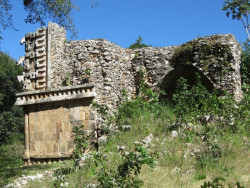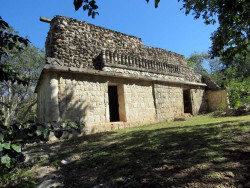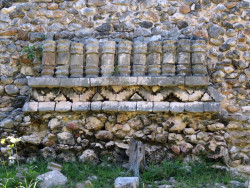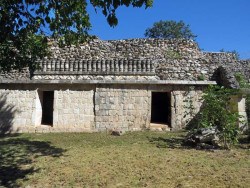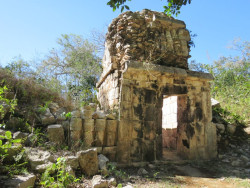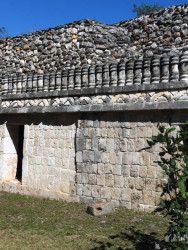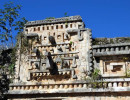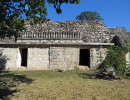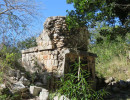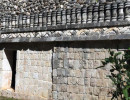- You are here:
- Home
- Man-made
- Archeological Sites
- Xlapak in Mexico
Xlapak in Mexico
The Pre-Colombian Mayan Xlapak Ruins in Mexico
Xlapak is a small Maya archaeological site in the Yucatan Peninsula of southeastern Mexico. It is located in the heart of the Puuc region, about 4 kilometers (2.5 miles) from the archaeological site of Labná and a similar distance from Sayil, lying directly between the two sites. It consists of three main groups in a valley of the Puuc Hills in Yucatán State, a region of karst limestone forming the only major topographical feature of the peninsula.
Xlapak displays a pure Puuc architectural style consistent with the Late Classic Period (600-900 A.D). There have been no stelae (carved stone slabs) recovered here to determine the names of its rulers or their relationship to the other nearby sites. The site dates from the Late to Terminal Classic periods and was in an area suitable for agriculture.
The site was rediscovered by John Lloyd Stevens and Fredrick Catherwood in the 1840s. Exploration, excavation, and restoration work have restored a few of the structures to their former glory. Restoration at Xlapak, and other nearby archaeological sites, was carried out in the first half of the 20th century by the Mexican Instituto de Antropologia e Historia (Institute of Anthropology and History). The site core is located in the flat valley bottom, while in the surrounding hills the remains of perishable structures have been found.
The main feature of Group 1 is the Palace, which consists of nine rooms with decorated facades. Another palace is located in Group 2, which is decorated with columns. The architecture is an example of the ostentatious style of the Classic or Fluorescent Puuc, in common with the nearby sites of Sayil, Labna, Kabah, and Uxmal. Typical of this style is the highly decorated upper portions of the buildings that extend above the ceiling height. The decorations at Xlapak are well preserved and include masks of the Yucatec Maya rain god Chaac.
As is typical with Puuc architecture the walls below the medial molding are plain. Above this are intricate geometric designs made from interlocking finished stone. The corners are surmounted by beautiful, stacked Chaac (Maya rain god) masks that feature an upward-curved snout.
An interesting observation while studying Google Earth is that Labna, Xlapak, and Sayil are in a straight line running east 95.28 degrees.
Photographed in 2024.
































